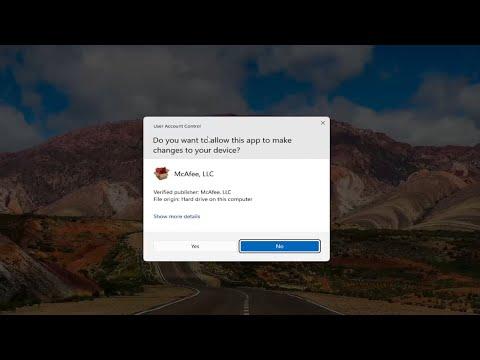I never thought that a simple software installation could turn into such a hassle, but that’s exactly what happened with McAfee WebAdvisor. It all started when I was trying to boost my online security and came across McAfee WebAdvisor. It seemed like a straightforward solution to safeguard my browsing experience and protect me from potentially harmful websites. The initial setup was quick and easy, and I appreciated the added layer of security it provided. However, as time went on, I began to notice that WebAdvisor was becoming more of a nuisance than a help.
The trouble began when I started encountering issues with my browser’s performance. It seemed like web pages were loading slower, and I frequently faced interruptions due to WebAdvisor’s constant scans and pop-up notifications. At first, I thought it was just a minor inconvenience, but soon it became apparent that WebAdvisor was interfering with my browsing experience far more than I had anticipated. The constant prompts and the overly aggressive approach to blocking websites made me reconsider whether I truly needed this additional layer of security.
After some research, I realized that McAfee WebAdvisor was not the only security solution out there, and perhaps it was time to explore other options that might be less intrusive. The decision to uninstall WebAdvisor was not an easy one, but it was clear that I needed to take action to restore my browser’s performance and regain a smoother online experience. So, I set out to figure out the best way to uninstall McAfee WebAdvisor from my system.
The process of removing WebAdvisor turned out to be more complex than I had anticipated. My first attempt was to simply use the usual method of uninstalling a program through the Control Panel on Windows. I navigated to Control Panel, went to “Programs and Features,” and located McAfee WebAdvisor in the list of installed programs. I clicked on it, hit “Uninstall,” and followed the on-screen instructions. However, this method didn’t fully resolve the issue. Although WebAdvisor was no longer listed among my programs, I still noticed remnants of it lingering in my browser and the occasional pop-up.
Realizing that this was not a complete solution, I decided to dig deeper into the process of uninstalling WebAdvisor. I began by looking into McAfee’s official website for any specific instructions or tools designed to completely remove WebAdvisor. To my relief, I found that McAfee provides a specialized removal tool called the “McAfee Removal Tool” or “MCPR Tool” which is designed to thoroughly clean up their software from a system. Following the instructions on the website, I downloaded the MCPR Tool and ran it. The tool prompted me to restart my computer and then went through a comprehensive process of removing all McAfee-related files and registry entries from my system.
Even after using the MCPR Tool, I took additional steps to ensure that WebAdvisor was completely removed. I manually checked my browser extensions and add-ons to make sure that WebAdvisor had not left behind any remnants. I also went through my system’s startup programs to confirm that there were no residual McAfee processes still running. This thorough approach ensured that WebAdvisor was entirely removed from my system and that my browser was no longer being affected by its presence.
Throughout this process, I learned a lot about the importance of fully understanding the software I install and the steps required to remove it if it doesn’t meet my needs. McAfee WebAdvisor had seemed like a great idea initially, but its performance and the way it interacted with my browser became problematic. By taking a methodical approach to uninstalling the software, I was able to resolve the issues and restore my browser’s performance.
This experience also taught me the value of researching and utilizing specialized tools provided by software companies for uninstalling their products. The MCPR Tool was instrumental in ensuring that all traces of WebAdvisor were removed, which was something I wouldn’t have achieved with just the standard uninstallation process. If you ever find yourself in a similar situation with McAfee WebAdvisor or any other software, I highly recommend using the company’s official removal tools to ensure a clean and complete uninstallation.
In conclusion, uninstalling McAfee WebAdvisor was a more involved process than I had initially anticipated, but it was a valuable learning experience. It highlighted the importance of evaluating software not only for its benefits but also for its impact on your system’s performance. By taking the time to properly remove WebAdvisor and exploring other options, I was able to regain control of my browsing experience and find a solution that better suited my needs.
